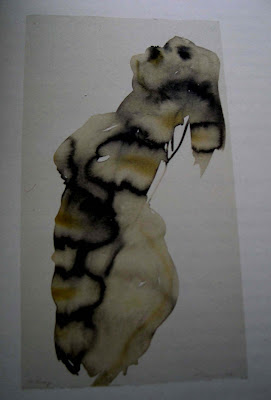
















So it seems that I am using this plot of land to explore the function of space, (with a few interjections of my own work, and work I find interesting). The concept of 'space' is invaluable to the artist, as it is the medium in which ideas can be visually phrased. The idea of creating a "synthesis of visual art and language" is significantly related to installation art as being both a presentation and social comment. Showing, after all, is telling.
But what is the situation in situationist art? It is the realisation of a better game.
Fluxus art is more concrete in it definition. It was introduced in 1961 by George Maciunas in New York, although the foundations originated from John Cage's experimental music in the 1950's. His use of 'inter-determinacy' produced erratic and surprising compositions, and this is an element fluxus art endeavoured to associate with. Similar to Dadaism, fluxus encouraged a DIY aesthetic; for example Marcel Duchamp's 'readymade' objects ('Fountain', 1917). Fluxus artists were a mixed, multicultural community due to the colossal immigration of artists into New York in the early twentieth century. Before this, America had no identity in the arts, and so New york became a cultural exchange of art, literature and music etc. Although, it was a struggle, especially in trying to gain respect from the literati's. So they never achieved a consistent identity in the art's, however this allowed them to integrate a a varied group of artist's including women. Fluxus did in fact have the highest number of participating women than in any other art group at the time.
However "the existing framework cannot subdue the new human force that is increasing day by day alongside the irresistible development of technology and the dissatisfaction of its possible uses in our senseless social life".




